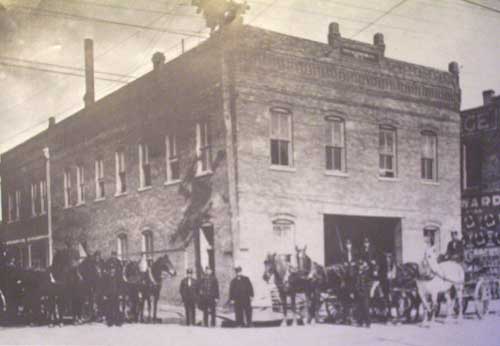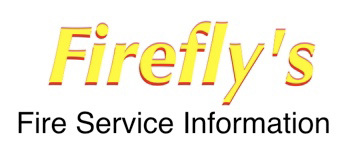
The Dallas
Fire Department, Horse & Chemical Company No. 2, cir. 1900.
Obituary,
May 28, 1898- The Dallas Daily Times Herald
"The funeral of Walter Cowan, aged 29, killed in Friday's fire,
will take place
from J. E. Dunn & Co.'s. undertaking establishment,
corner Main and Harwood
streets, Sunday morning at 9 o'clock,
conducted by Rev. Smith, Presbyterian."
There was some speculation
about the
circumstances and a firefighter's actions.
A firefighter by the name of W. E. Lacy gives his
account and defends himself below.
"He
Gives His Version of FF Cowan's Tragic Death."
- May 31, 1898, Dallas Daily Times Herald, p. 4, col. 3.
To the Times Herald:
Dallas, May 31.--Since the late fire, I have been confined to my room nursing
my burns and bruises, and have not seen a newspaper reporter, nor authorized
any of the numerous statements credited to me. As I was the only fireman with
unfortunate Cowan, the unfair statement of a Mr. Kennedy that said fireman threw
his hose out of the window and ran down the steps, and the additional statement
by said Kennedy in this morning's News, that he left no one in the front end
of the building where Cowan was buried, is my excuse for now appearing in print.
I
do not believe that Mr. Kennedy could ever convince the present members of
the fire department, Chief Wilkinson, or any of the old members that I ever
threw
a hose down or deserted my post, leaving Kennedy, or any one else to bear the
brunt. I was in charge of the chemical engine after I reached the fire. I carried
the line into the second story of the Lehman building from Elm street, played
on the walls of the Lehman building back to the opening in the rear of said
building, between that and the Shields building. While there, the first tank
was exhausted.
A young man (Cowan, I suppose) held the nozzle, while I ran through the second
story of the Lehman building to Elm street and called to a young man (Overstreet)
to dump the other tank. I then ran back to the Shields building and Cowan had
entered the opening into the Shields building with the hose, which was not
working, something being the matter with the valve. I took the nozzle, and
Mr. Lehman,
Cowan and a fleshy man assisted me in turning on the valve so that the nozzle
would work.
I
then entered the Shields building and went to the first opening in the Dorsey
wall, Cowan keeping with me. I warned Cowan twice to get out because
the smoke
was getting so dense that he would be suffocated. He evidently did not want
to leave me alone, because he stepped back some eight or ten feet and remained
standing
a few minutes, until the wall fell that completely buried him. I was knocked
down by the wall, or something, as my back and shoulders will attest. My legs
were pinioned by the hot bricks, and in extricating myself, my left boot was
left under the brick. Cowan was buried under at least six feet of hot brick
between me and the opening where we entered the building. At first, he yelled
lustily
five or six times. I had to crawl over the brick, under which, Cowan was buried,
to reach the opening where we entered, which I found blockaded, and had to
kick the sash out of a small window opening into the space between the Shields
and
Lehman buildings, through which, I escaped, going thence down the stairs through
the Lehman building to Elm street. I had to kick the glass out of the front
door of the Lehman building to get on to Elm street. After I crawled over
where Cowan
was buried, I could hear him faintly moaning. I could not get to him, nor,
could any one else from that end of the building. He was completely covered
with bricks,
every one as hot as fire could make it.
When
I entered the Shields building with Cowan, after having had the second tank
of the chemical turned on, I
saw Mr. Lehman, a fleshy man, and another
party
at the opening, and Fireman Ramsey was standing at the head of the stairway
of the Lehman building adjusting a sponge over his end of the building except
Cowan.
After entering the Shields building, I saw no one at all in that building].
I
desire no notoriety, nor shall I engage in any newspaper controversy. I have
nothing whatever to say about what any other party did. To the extent of
my ability, I did what I conceived to be my duty at the time.
W. E. LACY.
- May 31, 1898, Dallas Daily Times Herald, p. 4, col. 3.

